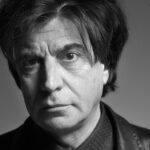5th extract | quinto extracto
[English]
I like the fact that people come to the studio full of enthusiasm, wanting to try things, to work and experiment, to learn and teach. A recent arrival is a young German architect who comes from a family of violinmakers. I asked him why he didn’t want to continue the family tradition and he replied that he was more interested in the violin case. A violin case is spatial and has a crucial relationship to what it contains. The Stradivarius violin case has to be as perfect as the instrument itself, nothing is extraneous, all is essential.
My work as an architect’s the same: to grasp a natural space and to construct a sort of case, to study the relationship between inside and outside, to be attentive to its construction, to the materials, to what’s going to happen inside it and in its skin. When the case opens, how does it seem? I think all these issues have to do with the essentiality of architecture.
The people, the light and the social organization of the program are much more interesting to me than the language. For me, the project is the distance that exists between the first idea and the built work; it’s an unfinished process. With the first sketch you’re already constructing and when the building’s finished you go on designing. The processes are interrupted at a certain moment, they might have gone on. If they’d left me a day more to visit the building, a small or big change would’ve been appreciable.
I like to recognize myself in a project where there isn’t any specification or spatial determinism, in ambiguous spaces, in those where neither construction nor program exists, where the location goes unrecognized, and in those where light alone becomes the main protagonist. They’re places which appear in a nocturnal X-ray, that express the degree of internal coherence of the projects, that relate the different autonomous parts by making them work as a system —in this way the building is converted into a more complex organism, there’s a higher order.
–Traducción al inglés: Paul Hammond–
[Español]
Me gusta que la gente venga al estudio con ilusión, con ganas de probar, de trabajar y experimentar, de aprender y enseñar. Ahora ha llegado un joven arquitecto alemán que viene de una familia de constructores de violines. Le pregunté por qué no quería continuar la tradición familiar y me contestó que le interesaba más el estuche del violín. Un estuche es espacial y tiene una gran relación con el contenido. El estuche de un Stradivarius ha de ser tan perfecto como el propio instrumento, no tiene nada accesorio, todo es esencial.
Mi trabajo como arquitecto es así: atrapar un espacio natural y construir un estuche, estudiar la relación exterior-interior, estar atento a su construcción, a los materiales, a lo que va a suceder en el interior y en su piel. Cuando el estuche se abre ¿cómo se presenta? Creo que todas estas cuestiones conllevan la esencialidad en arquitectura.
Las personas, la luz, la organización social del programa me interesan mucho más que el lenguaje. Para mí, el proyecto es la distancia que hay entre una primera idea y la obra construida, es un proceso inacabado. Con el primer boceto ya estás construyendo y cuando la obra se acaba, sigues proyectando. Los procesos se interrumpen en un momento determinado, podrían haber seguido. Si me hubieran dejado un día más de visita de obra seguramente se hubiera apreciado una pequeña o gran transformación.
En algún proyecto me gusta reconocerme donde no hay especificación ni determinismo espacial, en espacios ambiguos, en los que no existe construcción ni programa, donde no se reconoce el lugar y en los que solo la luz se convierte en protagonista. Son lugares que aparecen en una radiografía nocturna, que expresan el grado de coherencia interna de los proyectos, que relacionan las diferentes partes autónomas haciéndolas funcionar como un sistema, así el edificio se convierte en un organismo mas complejo, hay un orden superior.
Los siete extractos que corresponden a la conversación son:
The seven extracts from the conversation are:
01 the highest thing you could aspire to | la máxima aspiración…
02 un profesor que no he tenido | one teacher I didn’t have…
03 proyectos en pequeña escala | projects on a small scale…
04 una estructura profesional | a professional structure…
05 el estuche de un Stradivarius | the Stradivarius violin case…
06 cuando no existe el material preciso | when the precise material doesn’t exist…
07 trabajar en Barcelona | working in Barcelona…
INDEX …self Carlos Ferrater, 7 chapters extractos











